#Ad maker
Explore tagged Tumblr posts
Text

Tips for Effective Ad Creation
In this Infographics, you will get to know about the tips for effective ad creation.
2 notes
·
View notes
Text
In this podcast you will get to know about how can an Instagram ad maker boost your business.
0 notes
Text
How Can an Instagram Ad Maker Boost Your Business?

Getting noticed on Instagram isn’t easy anymore, every brand is fighting for a moment of attention. With over 2 billion users scrolling, tapping, and swiping daily, the pressure to stand out is real.
Today, Instagram remains one of the most powerful platforms for visibility and engagement. But to rise above the noise, businesses need more than just good content, they need smart tools and automation that make creativity faster, sharper, and more effective.
One such tool that’s transforming how businesses approach Instagram marketing is an Instagram ad maker. Designed with features that prioritize speed, customization, and high-quality output, it empowers brands to scale their campaigns quickly, produce eye-catching content, and connect with their audience more effectively than ever before.
Why Instagram Ads Are Crucial for Growth
Before exploring the benefits of automated ad design, it’s important to understand Instagram ads' unique power. With immersive visual formats like Stories, Reels, and carousels, businesses can engage audiences more effectively than on many other platforms.
Instagram offers robust targeting options, allowing businesses to zero in on the right demographic based on interests, behaviors, location, and more. With such flexibility, brands can create highly personalized campaigns that connect deeply with their ideal audience.
However, running impactful campaigns consistently requires creative efficiency, something tough to maintain without the right tools.
The Power of Automation in Ad Design
Manual ad creation can be time-consuming. Between brainstorming ideas, designing visuals, and writing persuasive copy, marketers can quickly find themselves overwhelmed. This is where an advanced ad maker streamlines the entire process.
By automating routine creative tasks, these tools enable teams to work faster while still maintaining high-quality output. Pre-designed templates, drag-and-drop editors, and branding presets simplify design while ensuring consistency across all campaigns.
Even for businesses with limited design experience, modern ad creation tools make it possible to produce professional-grade content that converts.
Ad Copy that Converts: The Role of Generative Tools

The success of a campaign doesn’t just rely on visuals, what your ad says is just as important. That’s where an ad copy generator becomes invaluable.
Instead of spending hours writing and refining headlines or captions, marketers can use AI content creation tools to generate compelling ad copy based on their campaign goals. Whether the focus is brand awareness, lead generation, or product promotion, copy generators suggest language that resonates with your audience.
These tools improve messaging accuracy and conversion rates by leveraging machine learning and data-driven suggestions, saving valuable time.
Consistency Across Campaigns
Consistency in branding builds trust. Using the same visual tone, typography, and messaging style in every piece of content strengthens brand recall. But manually maintaining that consistency across dozens or hundreds of ads is a big challenge.
With an advanced creative platform, businesses can store brand assets, define voice and tone parameters, and apply them automatically to new ads. This ensures every campaign feels aligned, even when created by different team members or across various campaigns.
This uniformity builds recognition and ultimately, long-term loyalty.
What Makes Creative Efficiency a Game-Changer for Instagram Campaigns?
One of the most overlooked challenges in Instagram marketing is the time it takes to go from concept to launch. A successful campaign is differentiated from a mediocre one by its creative efficiency, and the ability to produce high-quality content quickly and at scale. Smart design and automation tools can help businesses reduce production time, maintain brand consistency, and respond to trends faster. This edge not only improves ad performance but also helps maximize return on investment in a highly competitive space.
Collaboration Made Easy

A campaign usually involves several stakeholders, including designers, copywriters, media buyers, and marketing managers. Without a central platform, collaboration can become chaotic.
Ad creation platforms often include features like shared dashboards, comment threads, and task assignments. Paired with an intelligent ad generator, the entire workflow becomes even smoother. This not only improves communication but also accelerates production cycles. Changes are tracked, feedback is centralized, and approvals become more transparent.
When teams work better together, campaigns launch faster and with fewer revisions.
Scaling Made Simple
For businesses looking to scale quickly, efficiency is everything. Launching multiple campaigns across different markets, languages, and customer segments demands a high level of creative productivity.
Rather than recreating each asset from scratch, automation tools allow for bulk editing, asset duplication, and template reuse. This makes it easier to scale campaigns without sacrificing quality or personalization.
An integrated asset library and performance tracking allow businesses to identify and replicate high-performing ads for new audiences.
You can also match:How To Create High-Converting AI Tools Ads with AdsGPT?
youtube
Final Thoughts
Standing out on Instagram isn’t about luck, it’s about speed, creativity, and consistency. With so much visual content competing for attention, businesses have a small window to make a strong impression. Tools that handle design and copywriting behind the scenes make that job easier. They boost efficiency without sacrificing quality, helping brands create campaigns that connect and convert.
Whether you’re a small business owner or part of a large marketing team, embracing smart creative technology can be the key to unlocking Instagram’s full potential. With the right Instagram ad maker, businesses can streamline creative workflows, improve collaboration, and generate content that truly resonates with their audience. When combined with an intelligent ad copy generator, the process becomes even more powerful, ensuring every campaign is not only visually appealing but also strategically aligned.
0 notes
Text
Can AI Ad Generator Replace Human Creativity in Advertising?
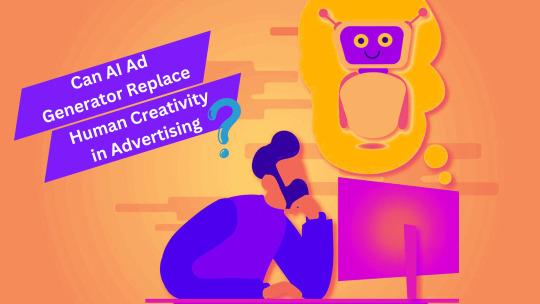
The technologies we use to develop compelling campaigns are changing quickly along with the advertising industry. One of the most discussed advancements is the rise of artificial intelligence (AI) in advertising, particularly the development of AI-powered systems that can generate ads. This shift has sparked a debate: can these automated systems replace the creative minds behind ad campaigns? While AI has undoubtedly brought efficiency and innovation to the industry, human creativity remains at the heart of effective advertising.
In this blog, we explore the potential of AI-generated advertisements, their limitations, and the enduring importance of human input in crafting meaningful, engaging ads.
The Rise of AI in Advertising
These days, AI algorithms can comprehend consumer preferences, create individualized ad content based on data-driven insights, and even create campaign visuals. The introduction of an AI ad generator, for instance, allows marketers to produce advertisements quickly and at scale by feeding algorithms with inputs like audience demographics, past campaign data, and market trends.
These automated systems can handle repetitive tasks like copywriting, generating banners, or testing various ad versions to determine which performs best.
The Role of Human Creativity
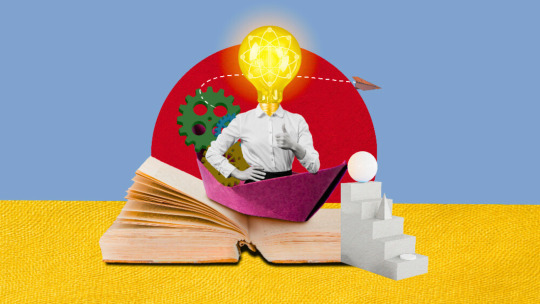
Effective advertising is about more than just data and algorithms. It is about storytelling, building relationships, and creating a brand identity that resonates with people. A skilled marketer or copywriter can infuse emotion, humor, and empathy into an ad, making it relevant. These human qualities add an authenticity to the advertisement that AI, at least for now, struggles to replicate.
Furthermore, creativity often involves thinking outside the box, taking risks, and exploring unconventional ideas. While AI is good at optimizing based on patterns and past success, it may lack the imagination to push boundaries and create groundbreaking concepts that capture the audience’s attention in new ways.
The Strengths of AI in Advertising
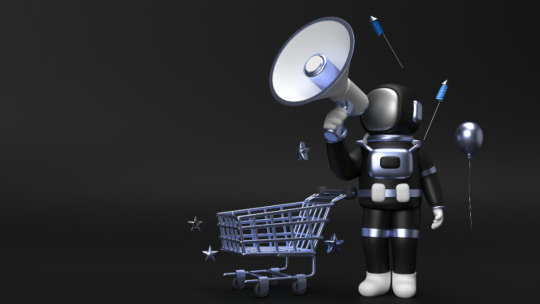
AI can analyze customer behavior, predict trends, and generate highly targeted content, allowing marketers to reach the right audience with the right message at the right time.
For instance, an AI-powered system can help a company create hundreds of ad variations in a short period, testing them in real time to determine which ones perform best. This data-driven approach ensures that ads are continuously optimized for better engagement and conversion rates. However, these strengths are most impactful when human expertise is guiding the process.
The Limitations of AI in Ad Creation
AI-generated content can sometimes feel formulaic, repetitive, or lack the spark of originality that makes ads truly memorable. Ads that evoke emotion or challenge societal norms often require a level of creative risk that AI is not equipped to handle. For example, successful campaigns like Dove’s “Real Beauty” or Nike’s “Just Do It” not only convey a message but also tap into deep cultural values and human experiences.
Another difficulty is that AI is only as effective as the data it receives. Human oversight is required to ensure that content resonates with the intended audience and adheres to ethical norms.
Finding the Right Balance
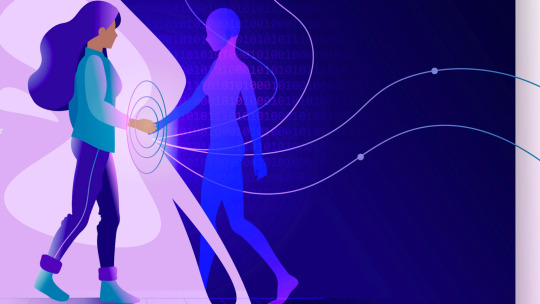
The ideal approach blends the strengths of both. AI can handle data-heavy, repetitive tasks such as ad targeting, optimization, and content generation. Meanwhile, human marketers and creatives can focus on the bigger picture—crafting stories, building brand identities, and developing innovative concepts that engage and inspire consumers.
By combining AI and human expertise, brands can build advertising campaigns that are not only efficient and data-driven, but also relevant and emotionally resonant.
Also, watch this video - How To Create High-Converting AI Tools Ads with AdsGPT?
youtube
Wrapping Up
AI ad generator offer valuable tools for enhancing efficiency and targeting precision in advertising, they cannot replace the unique qualities of human creativity. While AI is quite good at managing repetitive chores, analyzing data, and improving campaigns, it still struggles to create advertisements that defy conventional conventions or emotionally connect with viewers. The future of advertising lies in the collaboration between AI and human creatives, combining the best of both worlds to produce engaging, innovative campaigns that resonate with audiences. Human creativity, with its depth, intuition, and emotional intelligence, will continue to play an essential role in the advertising market.
1 note
·
View note
Text
Harnessing The Power Of Emotion With Advertisement Content Strategies

In today's competitive digital space, creating effective advertisement content is complex. With an overwhelming influx of ads across various platforms, making a difference requires more than just catchy slogans or flashy visuals. A lasting impact is made on consumers when there is emotional connection. Emotion-driven advertising taps into the psyche of the audience, fostering a much deeper sense of loyalty and engagement. By knowing how emotions affect the purchasing decision, brands can create more compelling campaigns that will appeal to their target market.
Understanding Emotional Advertising
The basis of emotional advertising is the concept that emotions drive consumer behavior. Whether it's joy, fear, nostalgia, or empathy, an emotional response has the power to influence how people perceive a brand or product. When creating advertisement content, tapping into these emotions can significantly impact consumer perceptions and decisions. Studies have consistently shown that emotionally engaged consumers are more likely to make purchasing decisions and even become brand advocates.
Since the human brain processes emotional content faster than rational content, ads that elicit an emotional response are more memorable. Emotional responses also improve recall; that is, when a consumer feels strongly about a brand or product, they are more likely to remember the ad and respond accordingly. This emotional connection creates a sense of urgency, driving consumers to take immediate action, whether it's clicking on a link, sharing content, or making a purchase.
Empathy & Storytelling In Ads

Storytelling is one of the most effective ways to leverage emotion in advertisement content. A well-crafted narrative will draw people in, making them feel personally connected to the characters and situations portrayed. Whether it's a heartwarming story about family, a journey of personal triumph, or
Brands such as Coca-Cola and Nike have learned to tell stories that connect to basic human emotions like happiness, determination, and unity. For instance, Coca-Cola's "Open Happiness" campaign was extremely simple yet powerful in using an image of people sharing moments together, thus making the brand synonymous with positive experiences.
The Power Of Visuals & Music
Visuals and music used in advertisements can also be amplified for emotional responses. Music is a strong trigger that sets the tone for an advertisement very fast. For example, if there is upbeat music, one may get excited. Melodic, slow tunes can be related to sadness or nostalgia. Facial expressions and body language of individuals on screen can also tell more than words can say.
For instance, a commercial that depicts a family enjoying a holiday with soft lighting and warm tones can bring out feelings of comfort and happiness. In the same way, an advertisement featuring a hero overcoming adversity with a triumphant soundtrack can evoke motivation and empowerment.
Emotional Triggers Within Advertisement Content

Different emotions serve different purposes in advertising. The best emotional trigger for a campaign will help the ad reach a more enhanced effectiveness. Here are some of the most common emotional triggers and how they are used in advertising:
#1 Fear: Often used in public service announcements, safety campaigns, or insurance ads, fear-based content urges consumers to take action to avoid negative consequences. For example, anti-smoking ads may show the health risks of smoking, prompting individuals to quit.
#2 Happiness: Ads that make the audience laugh or smile leave an indelible mark on viewers. Companies selling leisure-related, entertainment-related, or social gathering-related products use happiness to emphasize the joy brought about by their products.
#3 Nostalgia: Many brands are using nostalgia as a means to reconnect with their customers. Longing for the past can be quite an emotional bond, especially among older audiences who remind them of simpler times. Any advertisement that contains retro elements or brings back a moment of yesteryear pop culture always creates nostalgia.
#4 Empathy: Empathetic advertising resonates with people at a personal level and has an empathetic attitude and compassion. Charitable causes or causes to create awareness on social issues often make use of empathy for taking action either in terms of donation or support.
Long-Term Emotional Connections

While this creates short-term sales, the actual aim is to establish an emotional relationship with consumers that will last longer. Brand consistency comes in at this point. It means that a brand consistently inspires emotions in a positive manner such as humor, empathy, or trustworthiness that helps create great brand loyalty.
Consumers who have an emotional connection with a brand are likely to return, recommend the product to others, and stay loyal over time. A strong emotional connection transcends rational decision-making, making it harder for competitors to steal market share.
You can also watch: Effortless & Smart Ad Creation Made Simple with AdsGPT!
youtube
Conclusion
Advertisement content is no longer a luxury but a necessity where harnessing the power of emotion. Emotionally centered advertisements can form a more significant connection, help consumers build a loyalty relationship with a brand, and contribute to the generation of sales. Using story, determining the emotional hooks, and creating consistency across the brand, businesses can ensure that advertisement content is not only product sales-oriented but also meaningful and impactful to their target audience. In a world drowning in advertising, it will be those brands that create emotions in people, rather than mere thoughts.
0 notes
Text
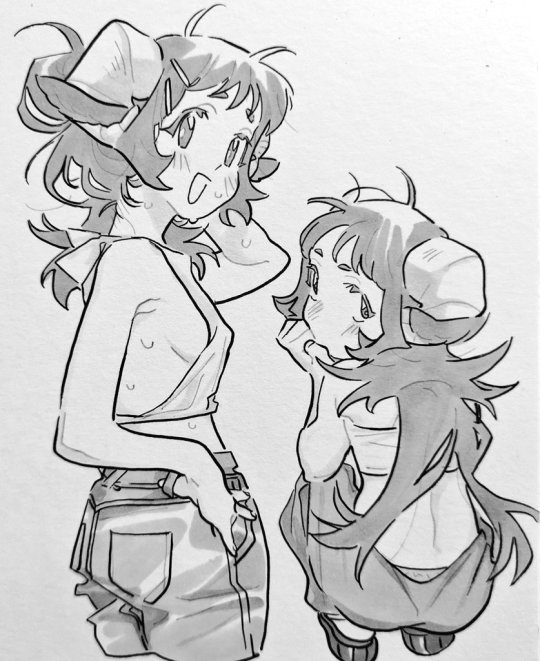
my goat is sweaty
#my oc#merry#it feels funny to perv on your own ocs. i am the maker adding unnecessary sideboob scenes
2K notes
·
View notes
Text
Stobotnik but it's a shipping video made in windows movie maker from 2007 youtube
as requested by @madirws (with art by @madirws, @cheap-slaw, @carro-carrot, @demetera-kaziaik, @duckngk and @vyodka)
#hope i caught the vibe well enough#i had to install wmm for this#thank you internet archive#the hardest part was actually adding all the jpg compression#it's so funny how hard it is to make stuff deliberately low quality now#stobotnik#sonic movie#dr robotnik#agent stone#sonic#sonic movie 2#eggman#sonic robotnik#movie robotnik#dr ivo robotnik#dr. robotnik#robotnik#robotnik x stone#doctor robotnik#ivo robotnik#sonic cinematic universe#sonic movie fanart#sonic movie 3#sonic fanart#sonic the hedgehog#sonic the movie 2#sonic fandom#windows movie maker
769 notes
·
View notes
Text

Be cursed with my horrible spamtenninas suggestive but not explicit evil spamtenna sex under the cut


#tenna#spamton#spamtenna#makers adding the unnecessary spamtenna sex scenes into th game sigh#this all looked too funny for it to only be seen by exactly 1 person (my poor friend)#suggestive#how do i tag this#i am not the type of person to post this sort of stuff#the type of shit i be putting on my non art blog
315 notes
·
View notes
Text
I wanted In Stars and Time as a physical game I could put on my shelf so I made it!

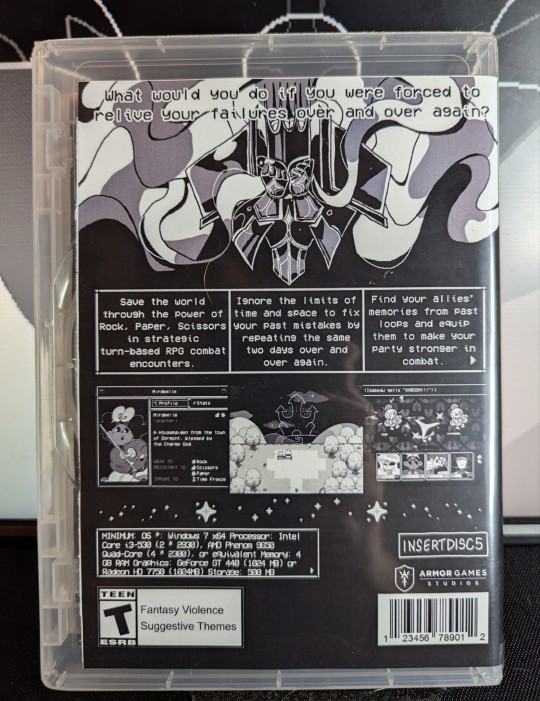

#I've been working on this for a couple months!#I used Steam Game Covers for the DVD case and disc templates.#The computer requirements were made using the ISAT Dialogue Maker.#Everything else was from official In Stars and Time things like the website#game files#or press kit.#in stars and time#isat#isat siffrin#siffrin isat#in stars and time siffrin#in stars and time isabeau#in stars and time mirabelle#in stars and time Bonnie#in stars and time odile#in stars and time game#atlas crafts#adding on#I made this before the official release was made
794 notes
·
View notes
Text
Can AI Ad Generator Replace Human Creativity in Advertising?
In this Podcast, you will get to know about potential of AI ad generator, their limitations, and the enduring importance of human input in crafting meaningful, engaging ads.
0 notes
Text
In this podcast you will get to know about how can an Instagram ad maker boost your business.
0 notes
Text
The Impact of Strong Ad Copy on Brand Image

A well-crafted message has the potential to shape perceptions, captivate audiences, and drive consumer loyalty. When executed effectively, ad messaging is more than just persuasive words—it becomes a strategic tool that reflects a brand’s identity, values, and promises. With every campaign, businesses have the opportunity to leave a lasting impression, influencing how they are perceived in the crowded marketplace.
This blog explores how powerful ad messaging can elevate brand image, creating connections that resonate with audiences across platforms.
The Role of Ad Copy in Shaping Perceptions
A company's brand image is essential to how its audience perceives it. It encompasses the emotional and intellectual associations people make with a brand. Effective communication is essential to creating this impression, and ad copy is the cornerstone of this endeavor. A compelling advertisement doesn't just sell a product; it conveys a story, evokes emotions, and aligns with the audience's values.
Effective advertising communications use clear, concise, and relatable language. They use the power of words to bridge the gap between a brand and its target audience. Whether it’s a witty tagline or an inspiring call to action, the right phrasing can transform an ordinary advertisement into a memorable experience. This is especially crucial in the digital age, where consumers are bombarded with messages every second. A well-crafted ad messaging cuts through the noise and ensures that the brand’s voice stands out.
Building Emotional Connections

A crucial element of successful advertising is the ability to forge emotional connections. For instance, advertisements that highlight personal success stories, community impact, or relatable challenges tend to resonate more. When people feel emotionally invested in a brand, they are more likely to engage with it and share their positive experiences with others.
Strong ad messaging goes beyond transactional appeals and delves into the aspirations, fears, and desires of its audience. For instance, a fitness brand might craft a campaign around personal empowerment and transformation rather than simply focusing on the features of its products. By doing so, the brand positions itself as an ally in the consumer’s journey, strengthening its image in the process.
Consistency Across Channels

A cohesive voice across various platforms—social media, email campaigns, TV commercials, and print—ensures that the audience perceives the brand as reliable and unified. Inconsistent messaging, on the other hand, might mislead customers and dilute a brand's image.
Consistency also involves aligning the tone and language of ad copy with the brand’s overall persona. For example, a luxury brand’s advertisements should exude elegance and sophistication, while a tech startup might adopt a more playful and innovative tone. This alignment reinforces the brand’s position in the market and ensures that every interaction with the audience contributes positively to its image.
The Role of Data and Feedback

Businesses can customize their messaging to target particular needs and interests by examining customer behavior, preferences, and feedback. A/B testing is a powerful method to determine which version of ad copy resonates most with the audience.
Additionally, monitoring engagement metrics such as click-through rates, conversions, and social media interactions provides valuable insights into the effectiveness of advertising efforts. By refining their messaging based on these insights, brands can continuously improve their campaigns and strengthen their image.
Also, watch this video - Meet AdsGPT’s Addie | Smarter Ad Copy Creation In Seconds
youtube
Wrapping Up
A strong brand image is built on top of a strong advertising copy. It shapes perceptions, builds emotional connections, and establishes a consistent voice across platforms. By aligning messaging with the values and aspirations of the target audience, businesses can create a lasting impression that resonates deeply. In today’s competitive marketplace, where every word matters, leveraging impactful ad copy can elevate a brand’s reputation and foster loyalty. With the right approach, businesses can ensure that their voice not only stands out but also defines how they are remembered.
1 note
·
View note
Text
Ad Maker A Beginner's Guide To Creating Effective Ads
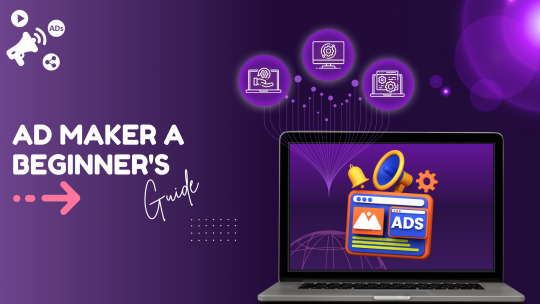
In today’s fast-paced digital world, the ability to create eye-catching and effective ads is a valuable skill for businesses, entrepreneurs, and marketers. Whether you're promoting a product, service, or brand, a well-crafted advertisement can make all the difference in attracting attention and driving conversions. If you're new to the world of advertising, you might feel overwhelmed by the number of tools and strategies available. That’s where an ad maker comes in. This tool allows you to design ads that not only look professional but also engage your target audience. In this guide, we’ll walk you through the essential steps of creating impactful ads, from understanding your audience to optimizing your designs. By the end of this guide, you'll have the knowledge and tools to start crafting ads that stand out and deliver results.
#1 Knowing Your Target Audience
The very base of any successful advertisement is knowing who your target audience is. Before you even start making the ad, ask yourself: Who am I trying to reach? What are their pain points? What motivates them to take action? Your ads should be tailored to resonate with the specific needs and desires of your audience. This could be through language, imagery, or the benefits your product or service offers.
For example, an ad for a fitness product might focus on health-conscious individuals looking to improve their lifestyle. The language might emphasize energy, vitality, and results, appealing to the motivations of those looking to make a change in their life. Similarly, if you're marketing a luxury item, your ad would need to reflect exclusivity and prestige, speaking to the desires of affluent customers.
#2 Crafting A Compelling Message
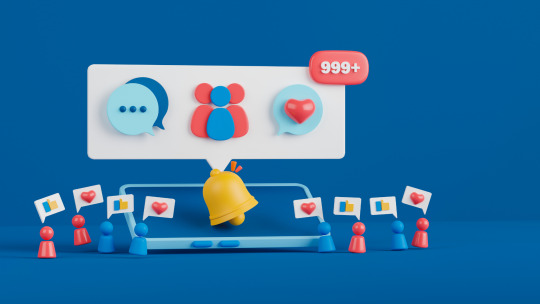
Once you understand your audience, the next step is to develop a clear, compelling message. Your ad should communicate the value of your product or service in a way that's concise, engaging, and relevant to the audience. Focus on the benefits, not just the features. Benefits answer the question "What's in it for me?" and they create a sense of urgency or desire.
For instance, rather than enumerating the features of a new smartphone, tell them how the phone makes their life easier, faster, or more enjoyable. Explain how this solves a problem or augments your daily life, and a great clear message grabs the attention of a customer's eye, leading him further to take a purchase decision, or learn more about it.
#3 Attention-Grabbing Design
In advertising, first impressions are everything. The design of your ad will play a big role in how well it grabs attention and gets your message across. The visual aspects of an ad should be attractive, easy to understand, and consistent with the brand as a whole.
First of all, use bold, clear headlines that are readable at arm's length. Use strong colors, fonts, and high-quality images or graphics to make your ad stand out. Simple and clear is key; don't overload your design with too much text or too many elements. Instead, focus on one very strong visual element that underpins the message. Remember, the information should be communicated quickly and effectively in a crowded space.
#4 Call To Action (CTA)
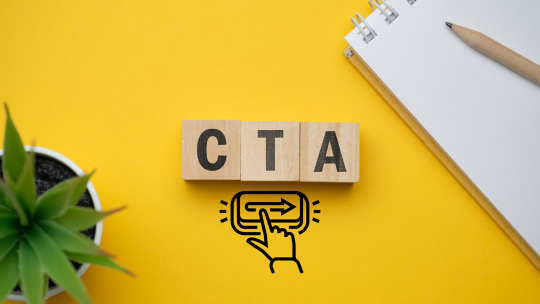
There should be a call to action in an effective ad. A call to action is a directive that tells your audience what you want them to do next. Whether you want them to "Buy Now," "Learn More," "Sign Up," or "Get Started," your call to action has to be easy to find and simple to follow. Your call to action should be direct and persuasive and should urge the viewer to take the action right away.
Be specific in your CTA. For example, instead of just saying "Shop Now," you could say "Shop Now for 20% Off Your First Order." That not only tells the viewer what to do but also gives them an incentive to act.
#5 Testing And Optimization
One of the most crucial steps in creating effective ads is testing and optimization. Even the best ad campaigns need fine-tuning to maximize their performance. Run A/B tests by creating different versions of your ad and comparing their results. Test different headlines, images, and CTAs to see which ones resonate most with your audience.
Monitor key performance indicators (KPIs) such as click-through rates, conversion rates, and engagement metrics. Use this data to refine your ad designs, messaging, and targeting. Over time, you'll become better at understanding what works and how to make adjustments to improve results.
#6 Understanding Ad Platforms
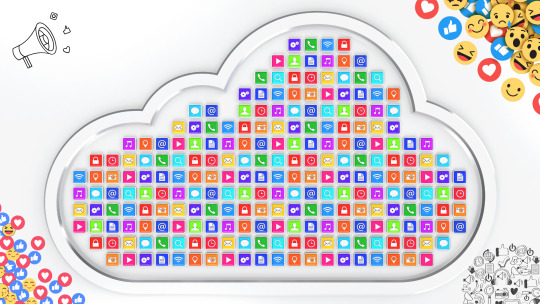
Currently, there are many platforms available that one can use to create and run their ads, such as social media, search engines, and websites. Each of these platforms will have its own best practices as well as audience characteristics. For example, Facebook ads tend to do great for visual products, but Google Ads may be much more effective for search-driven queries.
Familiarize yourself with the platforms you are advertising on as they all have their own sets of creative guidelines and technical specifications. For example, some platforms might require specific size and formats for images, videos, or copy. This knowledge will help you to ensure that your ads look at their best and are well-optimized for performance.
#7 Budgeting For Ads
Finally, your advertising budget is essential to a successful campaign. Determine how much you're willing to spend and allocate your budget accordingly across different ad platforms. Be mindful of your spending and monitor the performance of your ads to ensure you're getting the best return on investment (ROI). Start small and scale up as you see positive results.
You can also watch: Meet AdsGPT’s Addie| Smarter Ad Copy Creation In Seconds
youtube
Conclusion
Creating effective ads with an ad maker will be creative, strategic, and rooted in understanding your audience's needs. By emphasizing a message, an attractive design, a proper call to action, and then testing and optimization, it is possible to come up with ads that resonate with the viewer while driving tangible results. So, take these principles and get cracking as you begin exploring the wide world of advertising. With practice and persistence, using an Ad Maker, you will be able to hone your craft and create ads that really drive home the message.
1 note
·
View note
Text

1976 Novelty Label Makers
#label maker#1976#1970s#vintage#ad#ads#advertising#advertisement#vintage ad#vintage ads#vintage advertising#vintage advertisement
111 notes
·
View notes
Text
OK IT TURNS OUT THERES SOME NEW THINGS AS WELL????


WHOS COB???? WHY IS THERE A NEW RED AREA???? THERE HAS TO BE MORE GOING ON BESIDES NEW MERCH
#off game#off rpg#off rpg maker#off the game#mortis ghost off#off mortis ghost#IM LOSING MY GODDAMN MIND RIGHT NOW#I CANT TAKE ALL OF THIS#ITS SO MUCH ITS THE MOST WEVE GOTTEN IN YEARS#Ok my bets on It’s going to be a steam release with added content#that’s the only explanation for these otherwise WHAT THE ACTUAL FUCK
220 notes
·
View notes
Text
Sooooo turns out I have ocd 👍 (just got back from the physiatrist) and it honestly explains a LOT
#uh how to tag this#mental health#neurodivergent#ocd#i started filling out the questionnaire and was like “ohhhhhh”#anyway idk#I’ve certainly had. A day.#Currently I’m diagnosed with adhd anxiety and dyscalculia#But this place is adding on the ocd diagnosis and upping my adhd med dose (yay!!)#And (when it makes sense for me to) I can ask them to officially add on gender dysphoria#But it’s technically also there!!! (Which I need to medically transition and probably also legally change name/gender maker/ect)#The diagnoses really just helps to feel like I know what’s going on in my brain and how to deal with it all#Also I’ll be starting therapy to just try it with this doctor who I’ve been seeing and knows about my gender and all that#So that’s really good#Idk#just#it feels like after years and years of struggling maybe I’m finally getting the help I need :)#So yay :)#emu rambles
67 notes
·
View notes